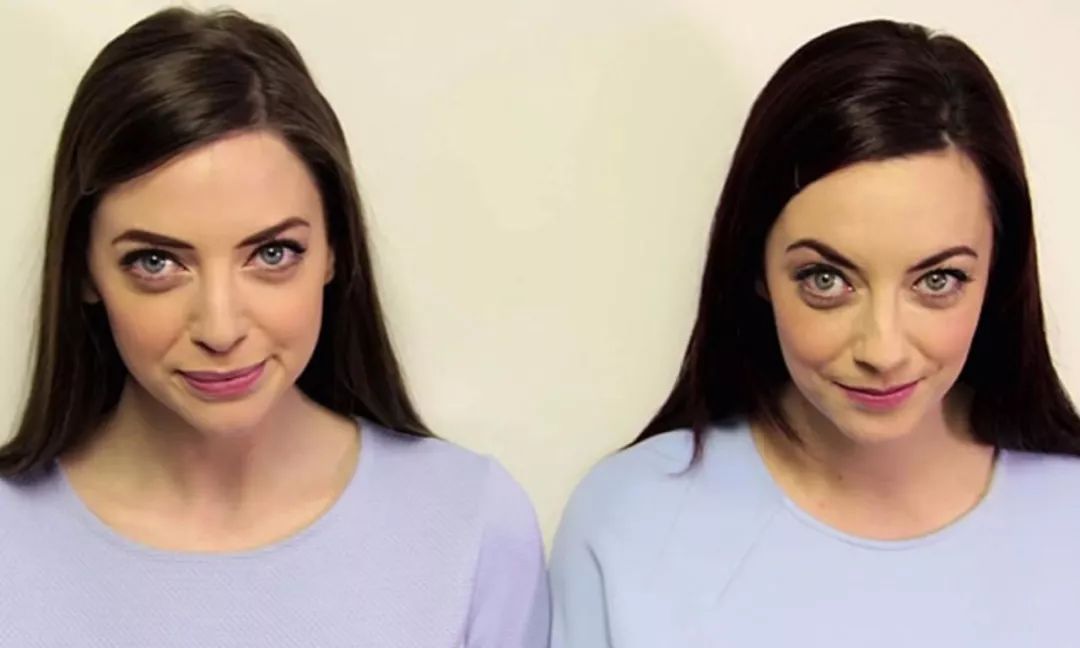
很多人都有过这样的社交烦恼:记不住只见过一两次的人的长相、分辨不了某两个特定的同事。这种烦恼在带来尴尬的同时,搞不好还会令人落得一个高冷的外部印象。人的面部识别能力有着悬殊的高下之分。有技艺卓绝的比如某些优秀的刑侦
人员,有过目即忘的比如自诩“不知妻美”的刘强东。意识是人脑对于客观世界的反映,是感觉、思维等各种心理过程的总和。分辨不出谁是谁,这个锅,你得背着,我也得背着。
不是搭讪:小姐姐,我们是否曾经见过?

作者:Jordan Suchow
译者:刘 璠
校对:刘 蕊
策划:刘 璠
本文选自 Aeon | 取经号原创翻译
关注 取经号,
回复关键词“外刊”
获取《经济学人》等原版外刊获得方法
Haven’t we met before? On doppelgängers and perception
我们是否曾经见过?关于四胞胎及其认知
In 2015, Niamh Geaney, a 28-year-old Irish woman, was approached by a TV production company to participate in an unusual competition: a race to find her twin stranger, a stranger who looks exactly like her. Within two weeks of scouring social networks and every other available outlet, she’d found
a dead ringe
r
, Karen Branigan, from Dublin. Then she found another match, Luisa Guizzardi, from Genoa. And then another, Irene Adams, from Sligo. Identical quadruplets by appearance, in reality they were unrelated.
2015年,某电视节目制作公司找到了当时28岁的爱尔兰女子Niamh Geaney,邀请她参加了一个不同寻常的比赛:找到和自己长得一模一样的陌生人。她花了两周的时间搜索社交网络和其他可能的途径,找到了和自己
长得一模一样的
Karen Branigan,来自都柏林。接着,她又找到了第二个人,来自热那亚的Karen Branigan。然后是第三个,来自斯莱戈的Irene Adams。从外表看,她们四个就像同卵四胞胎一样相像。但实际上,她们之间没有任何关系,
be a dead ringer for sb
(informal) to look very like sb 酷似,极像(某人);(和某人)一模一样
Geaney is not the only person to find
a spitting image
in an unlikely place. The abundance of doppelgängers, celebrity lookalikes and doubles found in artworks point to the same unsettling possibility: somewhere in the world, there’s a person who looks almost exactly like you. Whether you take this as an insult to your uniqueness or a testament to our collective humanity is up to you. Either way, the story of individuality does not end there, for a reason that these notions of facial resemblance often overlook: people vary in their visual-recognition capabilities, and these variations determine in part how similar others appear.
在一个不太可能的地方找到一个和自己
长相一样的人
,Geaney不是个案。大量长相相似的人、长得相像的名人,还有一些艺术作品中一模一样的人,都指向了一种未解的可能性:在这个世界上的某一处,有一个和你长得几乎完全一样的人。你可以把这种可能性当做是对你的独特性的一种冒犯,当然也可以把它当做是人类共性的一种佐证。不管怎样,关于个体特性的讨论不会止步于此,因为人们对于判别面部结构相似性的一些认知往往视而不见:人们的视觉认知能力各有高低。而这种能力上的差别,在某种程度上决定了人们对于他人长相相似性的判断。
spitting image
n. IDM be the spitting image of sb to look exactly like sb else 和某人长得一模一样
At one extreme are people with
prosopagnosia
, or ‘face blindness’. Present a prosopagnosic person with a photograph, and you’ll find that she can answer a diverse range of questions about a person in the picture, from hair colour to expressed emotion. But ask her to identify that person, and she will struggle – whether the photo depicts a celebrity, a close friend, or even herself. At the other extreme are ‘super recognisers’, whose ability to detect faces is so extraordinary that it comes with its own flavour of social problem: seeing people you recognise everywhere, even if you passed them only briefly on the subway several years ago. Most of us fall somewhere in between, able to recognise hundreds to thousands of individuals, but not every single one.
有一种极端情况是
面容失认症
,或者说“脸盲症”。让患有面容失认症的人观看一张照片,你会发现,被测试者能够回答得出关于照片中的人的各种问题,如发色、情绪等。但当研究人员请他辨认这个人的时候,他却产生了认知障碍。不管照片中是某位名人,还是他自己的一个密友,或者说就是他本人,情况都一样。而另一个极端情况则是“超级辨认者”,这种人具有卓越的面部识别能力,但同时也因此拥有自己独特的社交烦恼。他们可以记住在任何场合下碰到的任何人,哪怕仅仅是几年前短暂地在地铁站偶遇过。而我们大多数人识别面部的能力居于这两者中间。我们可以辨认出成百上千个个体,但无法辨认出每一个人。
People also vary in their ability to recognise particular kinds of faces or particular people. For example, psychologists have studied an effect of racial segregation, which makes people who look different from those who surround us harder to distinguish. Or consider the case of identical twins, who are typically indistinguishable to everyone but a small handful of friends and family who have acquired the ability to tell the twins apart through experience. To outsiders – even those with twins of their own – they look as similar as two people ever could. But to their parents, who have plenty of exposure and all the motivation in the world to reliably distinguish between the twins, they are unique.
面对某些特别类型的面孔,或者是特定民族的面孔时,人们的识别能力也是不同的。比如心理学家发现,种族因素也会对人们识别面部的能力产生阻断。对于那些不同于自己种族的人来说,识别难度就会大一些。另一种情况是同卵双胞胎。对于大多数人来说,他们通常是难以辨认的。只有一小部分朋友和家属,凭借与他们日常相处中累积的经验,获得了区分他们的能力。对于外人来说,同卵双胞胎看上去就是一模一样的,即使这些外人中有些人自己也是双胞胎。但是对于他们的父母来说,他们各自都是独一无二的。父母在与他们的长期相处中,获得了区别他们的能力。父母也确实有足够的动机想要将他们区别开来。
When reasoning about the similarity between faces, face-perception researchers appeal to the concept of a ‘face space’. As a comparison, think about how the location of an object can be described as a point in three-dimensional physical space. You can do the same with a mental object, such as a face, by describing its position in an abstract multidimensional space of perceived features and properties. Each point in the space maps to a face. Nearby points correspond to faces that look similar, while distant points represent faces that appear different.
面部识别方面的专家在推理面部相似性的时候,产生了“面部空间”这样一个概念。打个比喻来说,想象一下在三维物理空间中,我们将某个物体所处的位置描述为一个点。我们可以把这个空间同样运用于精神客体,如面部。用已知的特质和性质来描述面部在一个抽象的多维空间中的位置。空间中的每一个点,都代表了一张脸。相近的点代表了相似的脸。距离较远的点,则指向了差别较大的脸。
This point-in-a-face-space description of human appearance is not the whole story. The poet Walt Whitman said we contain multitudes. We also convey multitudes. Between ageing, blushing, dyeing, dieting, balding, sunbathing, smiling, sweating, scarring, shaving, piercing, exfoliating, botoxing and photoshopping, a person’s appearance changes considerably over time. Visual identity, then, is defined not by one single appearance, but by many, forming a hazy trajectory through face space. Those wishing to recognise us must do so despite these changes. And, usually, they do.





